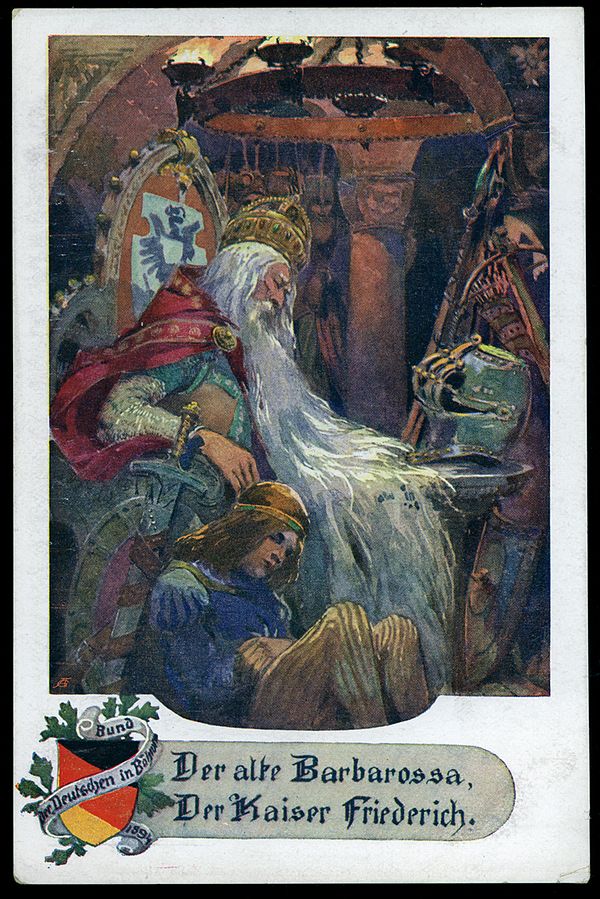Frederick Barbarossa: dead while alive, alive while dead
The deaths, real or presumed, of the German Emperor in Legnano and during the Crusade

German illustration, dating back to 1918, of Barbarossa together with his son Frederick, who died the year after his father, also during the crusade. The iconography often depicts him asleep and with a very long beard, due to the legend that spread after his death. In fact, the emperor was believed to be dead when he was still alive and after his death, the legend spread that he was still alive. Image from Commons.wikimedia.org
As was the custom among medieval kings, Emperor Frederick Barbarossa found himself in the midst of his knights during the Battle of Legnano in 1176. The Milanese infantry, though less experienced but far more numerous, repelled the charge of the German cavalry, disarming many knights. Among them was Frederick, whose horse was killed. At this point, seeing the dire situation and the precarious state of the emperor, his knights took advantage of the confusion to rescue him, pulling him away to safety. The Milanese also captured the imperial banner, which Frederick had been standing beside during the battle. This led to rumors that the emperor had died. It is possible that the Milanese and their allies did not attack Pavia, the imperial stronghold, because they were shocked by the presumed regicide. Even in Pavia, it was believed that he had died: his wife, Empress Beatrice of Burgundy, had already started dressing in mourning. To everyone's surprise, however, he reappeared a few days later, dressed in different clothes, after wandering who knows where. This news revitalized the imperial front, leading to agreements with Pope Alexander III and the communes of the Lombard League. Many years later, in 1190, during the Third Crusade, Barbarossa and his knights found themselves in southern Anatolia, in the gorges of the Taurus Mountains, where the Göksu River flowed rapidly. It is unclear what exactly happened: the elderly emperor may have drowned after falling from his horse or may have died from a sudden illness. As per tradition, his body was boiled and dismembered, with each part entrusted to a different place. Soon, however, legends began to spread that the emperor was still alive, in line with the tradition of the "sleeping hero," which also included Charlemagne. According to these legends, Barbarossa had taken refuge in a cave on Mount Kyffhäuser in Thuringia, where he slept while his enormous white beard continued to grow. Depending on the version, he would awaken either to restore Germany to its former greatness or to lead the Christian people in the final crusade against the forces of evil.
Book: Franco Cardini, La vera storia della Lega Lombarda, Mondadori, 2019
Book: Franco Cardini, Marina Montesano, Storia medievale, University Le Monnier, 2019
2025-08-03
Salvatore Ciccarello
